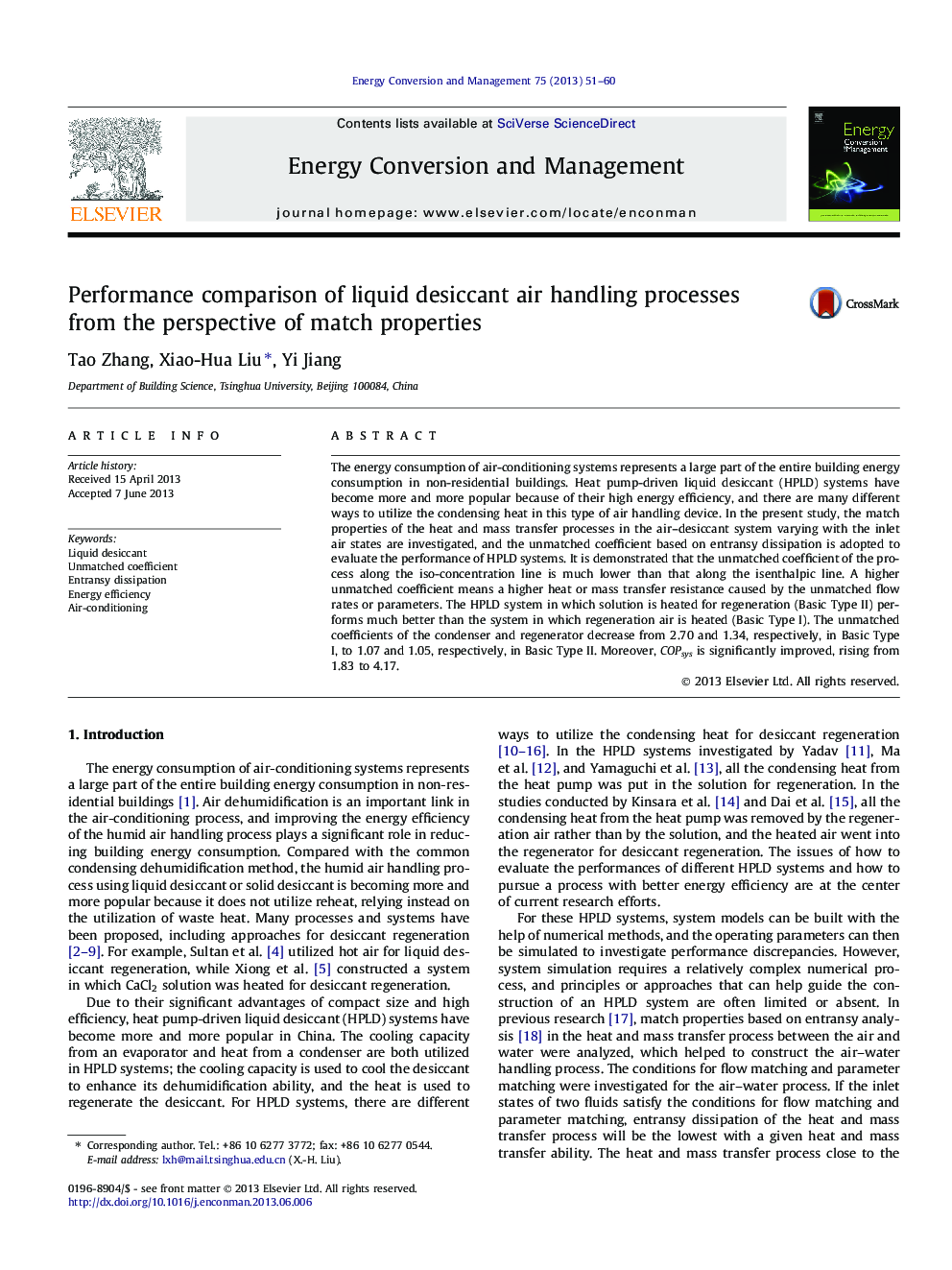| Article ID | Journal | Published Year | Pages | File Type |
|---|---|---|---|---|
| 7166100 | Energy Conversion and Management | 2013 | 10 Pages |
Abstract
The energy consumption of air-conditioning systems represents a large part of the entire building energy consumption in non-residential buildings. Heat pump-driven liquid desiccant (HPLD) systems have become more and more popular because of their high energy efficiency, and there are many different ways to utilize the condensing heat in this type of air handling device. In the present study, the match properties of the heat and mass transfer processes in the air-desiccant system varying with the inlet air states are investigated, and the unmatched coefficient based on entransy dissipation is adopted to evaluate the performance of HPLD systems. It is demonstrated that the unmatched coefficient of the process along the iso-concentration line is much lower than that along the isenthalpic line. A higher unmatched coefficient means a higher heat or mass transfer resistance caused by the unmatched flow rates or parameters. The HPLD system in which solution is heated for regeneration (Basic Type II) performs much better than the system in which regeneration air is heated (Basic Type I). The unmatched coefficients of the condenser and regenerator decrease from 2.70 and 1.34, respectively, in Basic Type I, to 1.07 and 1.05, respectively, in Basic Type II. Moreover, COPsys is significantly improved, rising from 1.83 to 4.17.
Related Topics
Physical Sciences and Engineering
Energy
Energy (General)
Authors
Tao Zhang, Xiao-Hua Liu, Yi Jiang,
